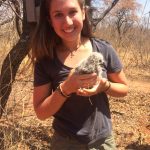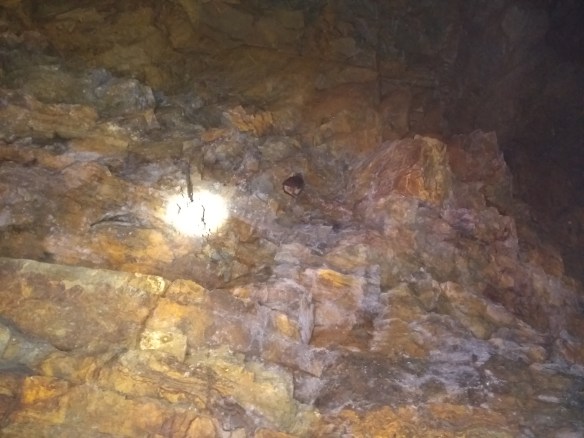 From BTO
From BTO
Some bird species provide cultural services, being aesthetically pleasing and having behaviours that people find interesting to watch. Others provide disservices (e.g. gulls, pigeons and corvids) negative for well-being. By documenting how the abundance and richness of species in these two groups correlates with human population density it was apparent that socio-economically deprived areas support low ratios of birds to people, particularly of cultural service species. These results inform management of green space, and provision of feeding and nesting sites, to promote positive interactions between birds and people within urbanised landscapes.

Working in collaboration with the University of Exeter, and funded by NERC, researchers carried out extensive bird surveys within an urban area, centred on the towns of Milton Keynes, Luton and Bedford, as part of a wider project investigating urban ecosystem services. These provided measures of the abundance and richness of bird species within both the cultural services (35 species) and disservices (nine species) groups. The research team was able to look at the human population by using data from the 2011 National Census, and to assess socio-economic status by using information published by the Office of National Statistics. Since bird diversity is strongly associated with the structure and availability of urban green space, the team also had to factor in the green space present within the study area.
Analyses revealed that the abundance of cultural service species increased with human population density but peaked at c.1,100 people per 500m x 500m grid tile. The abundance also increased with the proportion of urban green space. Interestingly, the species richness of cultural service birds decreased with human population density but increased with percentage green space. There was a positive linear relationship between the abundance and richness of cultural disservice species and both human population density and the availability of green space.
When the researchers mapped how the abundance of service and disservice birds co-varied with human population density, they found that the two groups of birds showed distinctly different spatial patterns. Service species were most abundant in areas of medium housing density – the suburbs – while disservice birds were most abundant in areas of dense housing, such as those around urban centres.

While these different patterns are not a direct consequence of human population density per se, they probably result from spatial differences in urban form, the pattern and management of urban green space, levels of disturbance and the availability of resources, all of which are known to vary along socio-economic gradients. This underlines that people living in different parts of the urban landscape are likely to experience different relationships with wild birds, with the human communities in socially deprived areas exposed to more species with negative behaviours than wealthier communities. A consequence of this is that the increased frequency of negative interactions experienced by these people is likely to shape their connection with nature and support for the conservation of the natural world in a negative manner.
The study identifies opportunities to deliver management approaches to counter these unfavourable relationships. Investment in urban green space and its management for cultural service birds is one obvious option, but there are also opportunities at the householder level, through practices such as wildlife gardening. Such householder level approaches can be of wider benefit because their beneficial effects are likely to increase the abundance and richness of cultural service birds in neighbouring gardens, meaning that the actions of a small number of people can provide health benefits for the wider community.
Download the paper Covariation in urban birds providing cultural services or disservices and people here








 From
From  Jersey ornithologist and bird ringer, Ian Buxton, first visited the Shiant Isles in 1977, returning in 1980. Since then Ian has made a further five trips during the last 10 years, until this year, his visits have been for two weeks during the summer to survey and monitor the breeding seabirds. In
Jersey ornithologist and bird ringer, Ian Buxton, first visited the Shiant Isles in 1977, returning in 1980. Since then Ian has made a further five trips during the last 10 years, until this year, his visits have been for two weeks during the summer to survey and monitor the breeding seabirds. In  An operation to eradicate the rats was carried out over the winter of 2015/16, led by a New Zealand-based company
An operation to eradicate the rats was carried out over the winter of 2015/16, led by a New Zealand-based company 

 From
From 
 Changes to a law to try to reduce problems with seagulls and other wild birds are now in place (see update
Changes to a law to try to reduce problems with seagulls and other wild birds are now in place (see update 
 From
From 
 The
The 

 From
From 


 Having got to where we are, many have asked; How has this all come about ? Well, in the autumn of 2015 The
Having got to where we are, many have asked; How has this all come about ? Well, in the autumn of 2015 The  weekend first island visit in November 2015, was a major factor in Cathy and I deciding to move to Alderney from Kent in March 2016. These early discussions brought about a 2-year observatory establishing pilot project supported by the Wildlife Trust, its primary remit to try and achieve bird observatory accreditation status from the Bird Observatories Council. Local interest and support for this project from the outset was exceptional and largely through Paul’s contacts we soon had a very experienced and capable bird observatory committee driving things forward.
weekend first island visit in November 2015, was a major factor in Cathy and I deciding to move to Alderney from Kent in March 2016. These early discussions brought about a 2-year observatory establishing pilot project supported by the Wildlife Trust, its primary remit to try and achieve bird observatory accreditation status from the Bird Observatories Council. Local interest and support for this project from the outset was exceptional and largely through Paul’s contacts we soon had a very experienced and capable bird observatory committee driving things forward.







 From
From 




